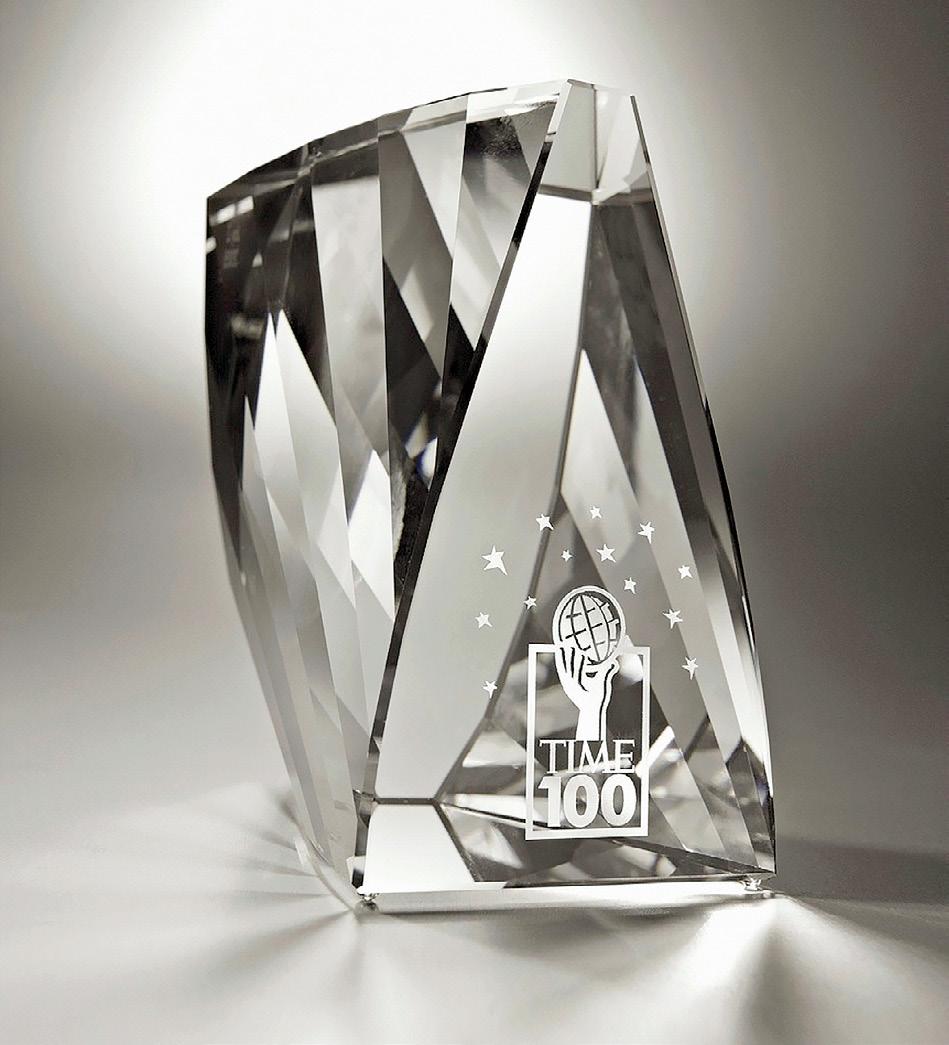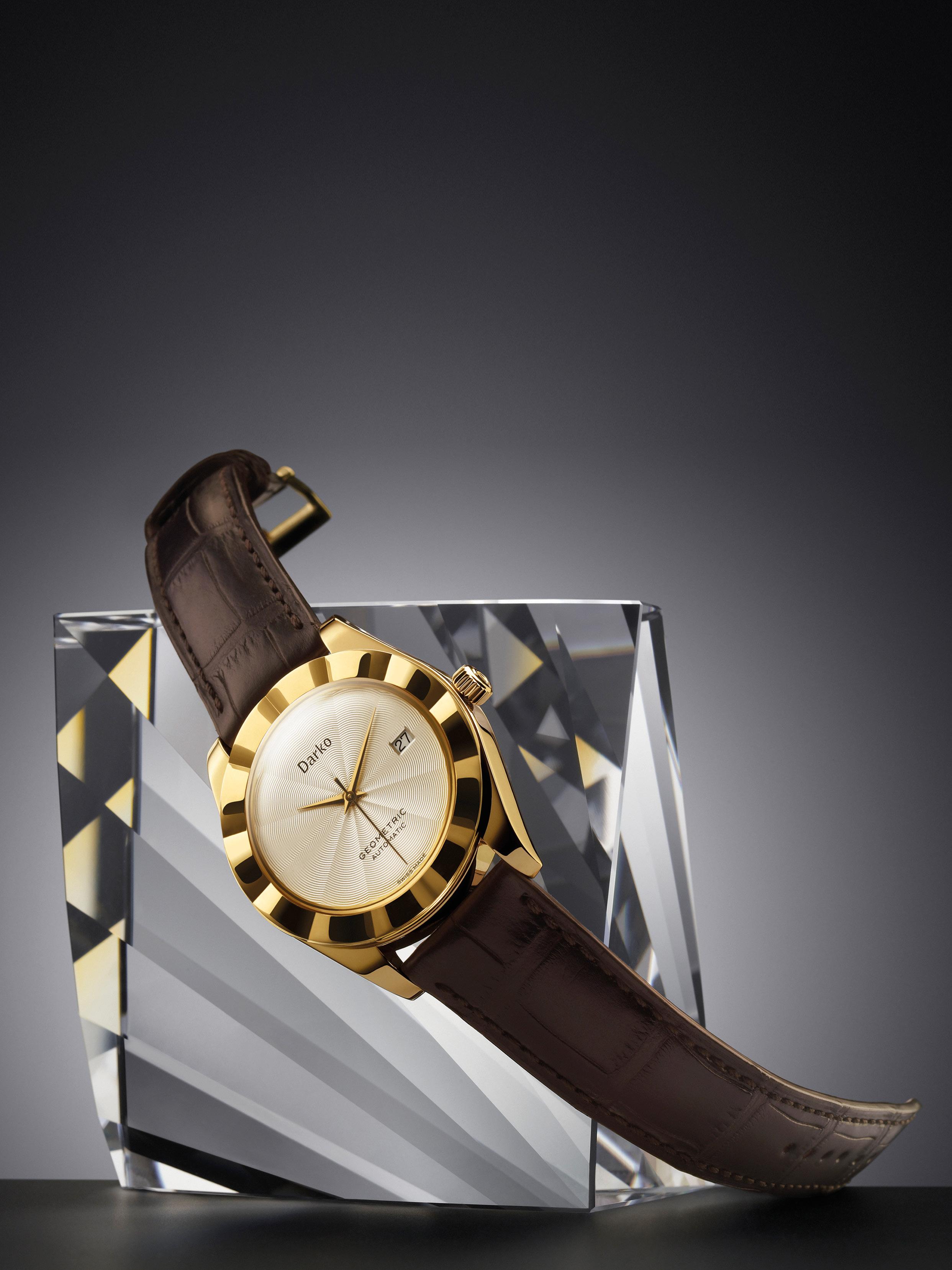
10 minute read
THE MAGIC OF CRYSTALS
DESIGN
Darko Mladenović, Serbian designer living in Paris, former art director in the Swarovski company and the author of numerous awarded design creations for some of the leading world brands, shared with us some secrets of his aesthetics and revealed how the new Paris symbol came into being, swiftly conquering the Parisians and the tourists
Advertisement
By:
DRAGANA MINIĆ STEFANOVIĆ
Photo:
PRIVATE COLLECTION
T
he media recently released an eye-catching story how the latest Paris symbol was designed by one of our artists. Two perfectly merged elements – the Eiffel Tower and a heart, in a way which suggests permanency – recalled the name of our designer Darko Mladenović to our minds. Although creations of this applied artist are of lasting value (even if sometimes we are not even aware they belong to him) Darko has a way of reminding us of his overall creation with every new piece.
Swarovski, Givenchy, Lancôme, Christofle, Louis Vuitton, Van Cleef & Arpels, Château Lafite Rothschild – these are just a few of luxurious brands Darko worked with. He is always pleased to talk about his experience with someone from Serbia. “When I was Swarovski art director, I used to be in the spotlight. Time passes quickly, and when you are an artist, you have these periods of intense presence in the media. It is always a pleasure for me to get in touch with someone from Belgrade”, Darko started his interview with our magazine.
The new symbol of Paris is expected to appear soon in many places and on many objects. The magical fusion of the heart which stands for the letter O and the famous construction stylized to resemble letter A in words Love Paris, carries more symbolism than even the author could have predicted.
The first thing we see when we look at the French capital’s new symbol is a star. Was it intentional?
— It is true that it turned out to be a star, but that was completely unconscious. The initial idea was to connect the heart and the Eiffel Tower into one infinite line, a connection, like an unbroken energy circulating between Paris and love.
Could Belgrade, which is changing so quickly nowadays, have a similar symbol?
— The process of life is transformation. The identity line is always there, and the only question is which way it flows towards the future. One needs to take some time for pondering how to find the best dynamics between the elements that people will identify with – now and in the future. This kind of creative process can make an impact. We cannot tell how long something may last, but once a creation has established a contact with people, it has a lasting effect. The symbol of Belgrade should be able to touch people, just like a singer touches the heart of the audience. This is a complex question and requires deep thinking – are we looking for it in the sphere of aesthetics or in the spirit? It would be necessary to record all positive elements, qualities, potentials, things we are good at, and think how to integrate all that into today’s and future world through one single project.
What is your accomplishment that you are most proud of?
— It is the sculpture Ray which I made for Swarovski, and which was taken over by the Time magazine as an award to influential people (Time 100 World’s Most Influential People). It had its own path, its own life, so to say, which was impossible to predict. It was my design, and then it was selected, and for me, it is a kind of magic, which after all is a characteristic of crystals. When I carried the crystal prototypes to meetings with Swarovski, in Austria and Switzerland, I was always asked to undergo additional baggage checks at the airport, because the first one could not identify what it was about. The custom officials were delighted to see a piece of crystal. Another magical thing about crystal is that when you are making a design of it, you have no idea what the result will be. It is that play of light which either happens or not, and this uncertainty makes the whole process so exciting.
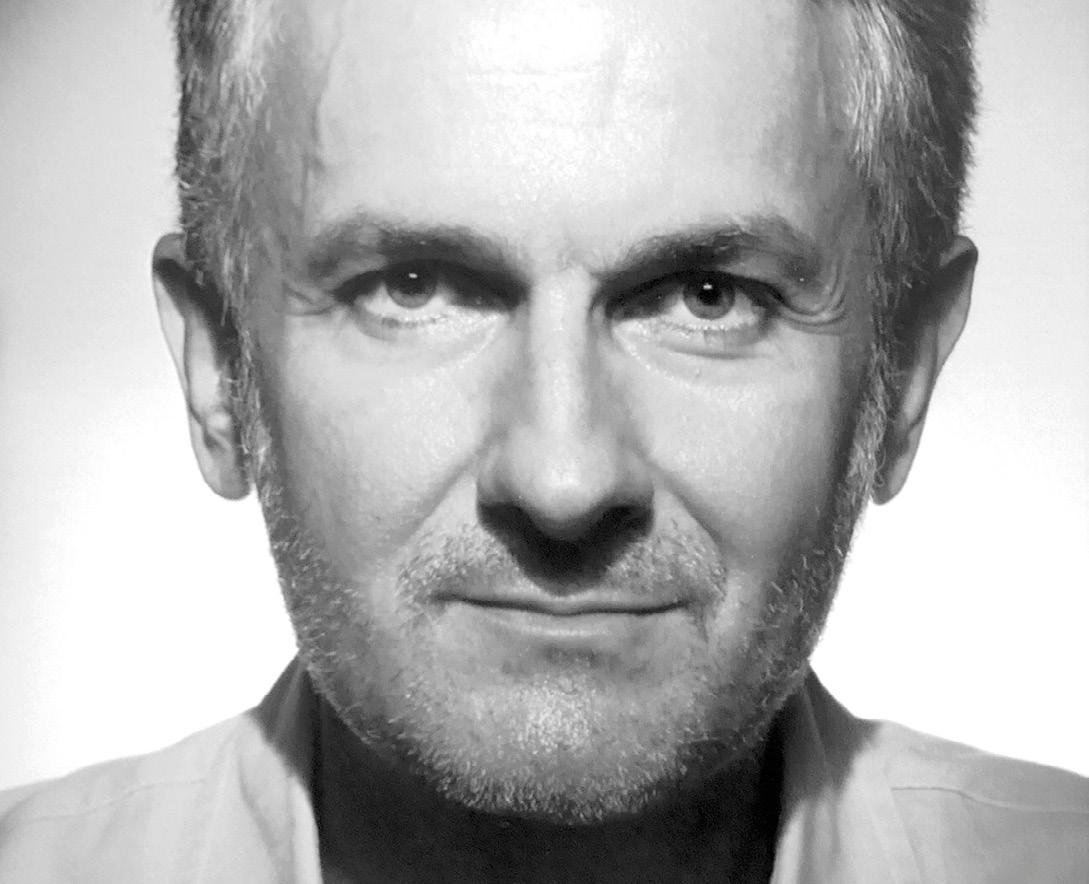
The logical addition to the Ray sculpture which connected important people across the world, was the Ray building. What does it stand for?
— The Ray building is symbolical architecture. It represents a universal symbol which interconnects all cultures through its structure. It was inspired by the sun rays which are the source of life, representing the pureness, ecology and sustainability. There is a dynamic cir-
culation of rays – from the park/greenery, across the building, to the light beams and the skies. It is the driving force of progress, and a link between the past, present and future.
Paris is not the only city to carry your creative signature, how about New York?
— In New York I worked as Swarovski’s creative director on the design of the New Year decoration of the Rockefeller centre, which stands for an important symbol of New York for Americans.
Measured by the media attention it received, we can say that the Ray figure was your most popular achievement. What are your other creations you are known for?
— It is questionable how many people know who the person behind the design of an art object is. Pieces we mentioned were signed by “Darko for Swarovski”, but you never know if anyone really reads that, follows, or knows who the person behind an idea is. One of my first projects for Lancôme was a small jar which stood the test of time. It was designed in 1994/95 and it is still there, and whoever buys this cosmetic item, certainly has no idea that it is me who designed it. It is doubtful whether the identification of the author always takes place through his work. I am happy to know that some of these creations survive the test of time and then I ask myself what is it that makes it possible – is it some basic human value that I touched?
You call yourself a philosigner, which is meant to be a mix of philosophy and design. What do you give priority to in your work – ethics or aesthetics?
— I view creative work as an attempt to bring some principles which give structure to this world – to the current world and to the future, but in a way to make them visible. I always wanted my creations to express something which has depth, which draws on the past, takes from the presence, and can be projected into the future. I wanted a combination of elements which take us back to something which is good and basic for every society. I realize that my creations last through time, in terms of durability, but also that they are accepted all over the world, in different cultures. It is through such a creative work that true and universal values are recovered, values that one can rely upon and wants to pass on to one’s children, they are real, they are not fake. For me, creative work is a kind of struggle for true values and ideas, but with a dose of aesthetics, certainly.
What kind of life is your watch living now, the one that you designed, and which bears the name of your brand? Was it released?
— I am working on the commercialization of the watch right now. It is a golden watch of French-Swiss production and is not intended for mass sales on internet, but only in boutiques. I learned so much in my contacts with producers. The Swiss are passionate about making watches, everything works just like in automobile industry, so you have separate manufacturers of watchbands, of the glass, of the mechanism… So right there on the ground, through these contacts, I saw my watch and my idea coming to life and I learned a lot.
From the perspective of today’s world, which is largely digital, what is it that puts a break on inspiration and art? — Every time has something to contribute. It is magical after all that we can communicate in this way by means of new


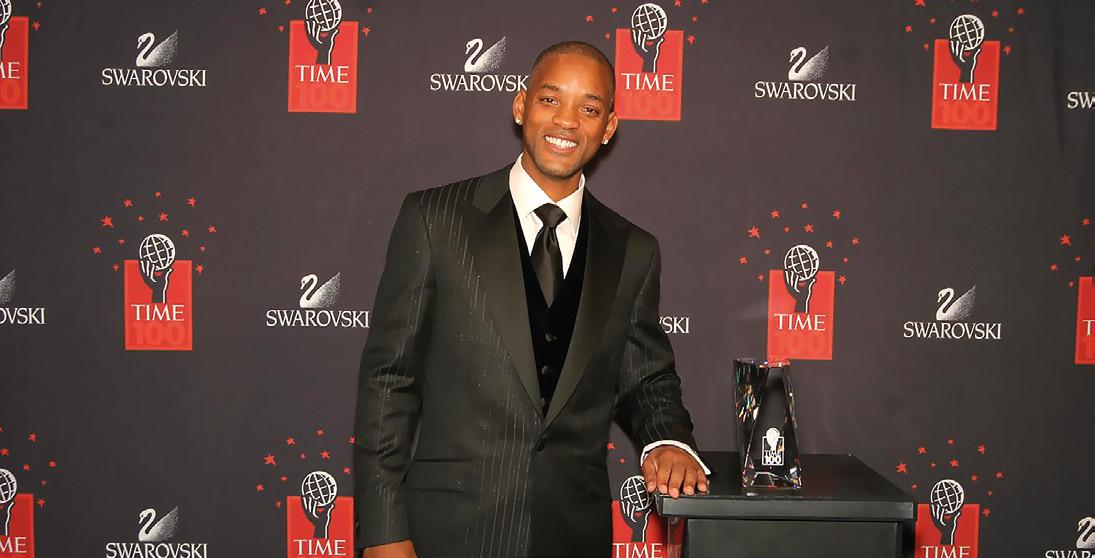
Will Smith is one of the winners of the Ray sculpture
New Paris symbol Ray Building sculpture
technology, we really find ourselves in Tesla’s concepts of more then one hundred years ago, and it is something incredible and for me, extraordinarily positive. It is this possibility to communicate in this way that paves the path for an inspiration. On the other hand, it is a fact that people are overwhelmed with information and absorbed in their gadgets, so they hardly look at each other anymore. This variety of information affects us, it’s just a matter of finding a balance. Maybe now we have less time to ponder deeply over some issues, to concentrate on one topic. It used to be simpler before, when we were focused on searching for information in the library, and that search itself made the information process deeper. Still, I think that new technologies teach us how to connect and act quickly and I believe there are some good elements in it which may even be passed to future generations genetically. So, all these things can incite us to something or interrupt us in something we are doing. I believe I can find the right balance in all that.
You are the world-renowned designer. When asked where you are from, what is your answer?
— I always say I’m from Belgrade. Before I used to say I’m from Yugoslavia, but now I say I’m from Serbia. Obviously, France had a huge influence on me because that is where I received my education. I travelled a lot as a child, so what with my descent and my roots, there is also the fact that when you live somewhere for a long time, it all has its influence on you. The thing is how to make use of the circumstances you find yourself in.
Just like you made use of your circumstances when you were a student and one of the few ones who submitted their design to some of the well-known companies, as well as your huge success with design of the Givenchy perfume bottle. Do you still rely heavily on your intuition?
— In a way even more so. I think we are all offered some chances that we need to recognize first, but then what follows afterwards is work. Intuition, yes, and then lots of work, concentration, personal development is needed so we can say in the end that the opportunity has been fully utilized. On the other hand, I’m not denying there is some kind of luck, which has, for example taken the Ray sculpture all the way to The Times magazine, which is not something I have consciously influenced. I also believe that having faith in your goal is very important, to truly care for something, to have your creations coming from the heart. It all implies personal development, effort, investment, continuity. Nothing happens overnight.
Which of the awards you received is your favourite?
— My first official award was for that Givenchy perfume bottle in 1991, which is very dear to me, but there is an anecdote which evokes that special emotion attached to the very first award. When I was a student in Belgrade’s Design school, a professor told us to design invitation cards for the Communist Party Congress. Few weeks later I was told that my design was selected. In the end they haven’t even sent the printed invitation card for us to see, but the anecdote remained, since that was, as far as I can remember, the first time that something I made was selected as outstanding. Still, I must admit that awards I received afterwards were the true confirmation that I was on the right path, because out of the five competitions in 1993, I was awarded three first prizes – for Boucheron, Lalique and Van Cleef and Arpels. After these three prizes I started to believe in my talent.

Lancome jar Givenchy perfume bottle

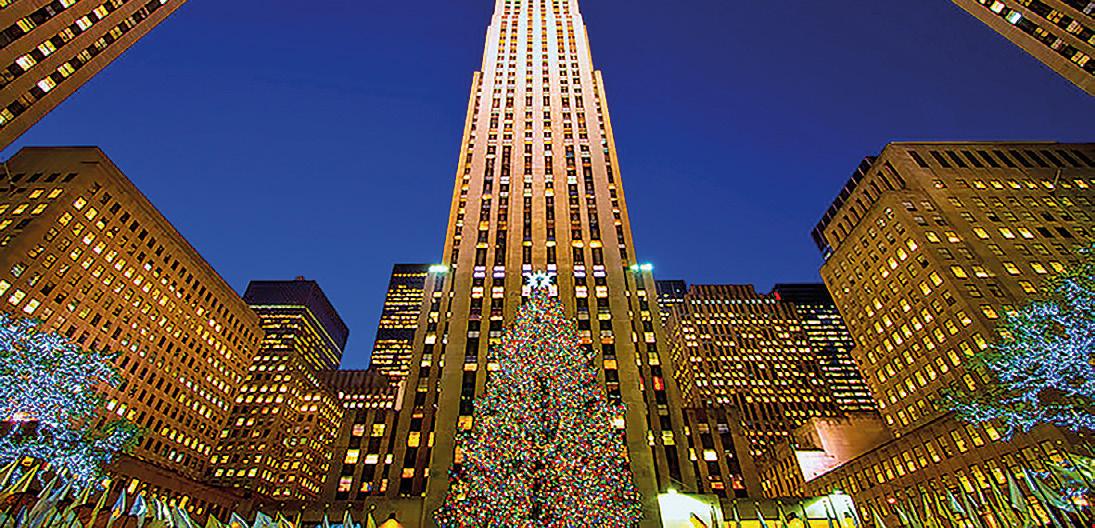
Ray sculpture as Time magazine award New Year decoration of the Rockefeller centre
